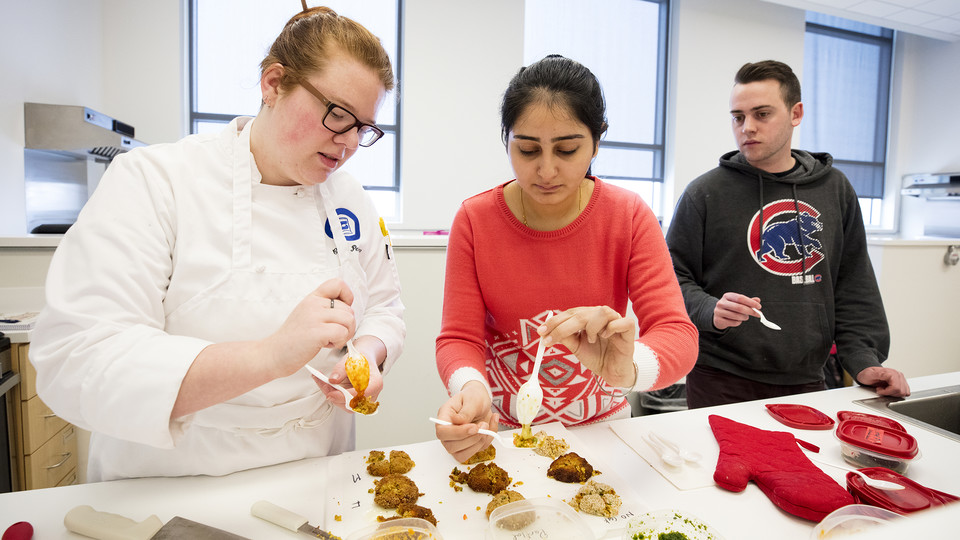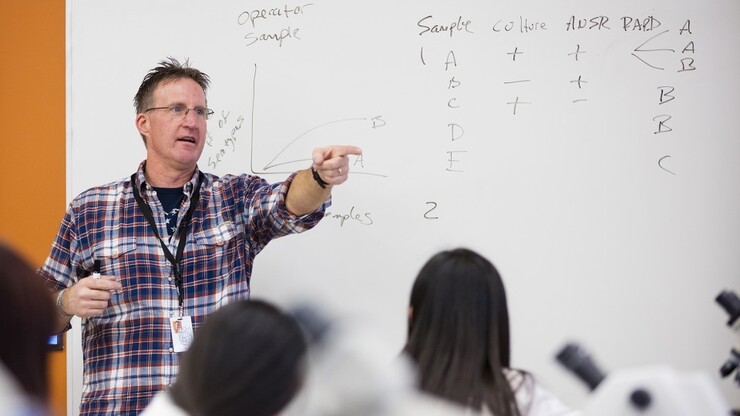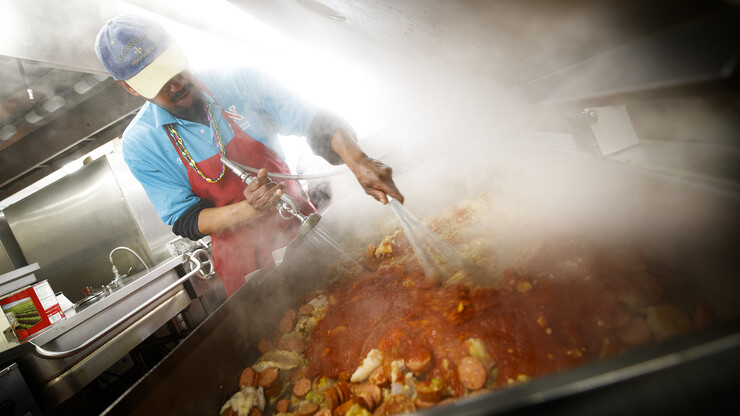· 4 min read
Series explores Nebraska’s focus on food-related research, outreach

After weeks of prep work, the table is set and Nebraska Today is dishing up a feast of food-related stories.
This weeklong smorgasbord — which begins with an opening course on how a diabetes diagnosis led sophomore Jacinda Benton to a major in nutrition and dietetics — is an exploration through the well-seasoned layers of food-related study at the University of Nebraska–Lincoln. It’s also a reflection of the importance of food-based inquiry for all of Nebraska, which is one of the nation’s top agriculture states where ag ranks as the No. 1 industry, followed by food manufacturing at No. 2.
Here at the Dear Old Nebraska U, the Department of Food Science and Technology leads the way in advancing food research, assisting industry partners and producing graduates to assist the industry. The department, based at Nebraska Innovation Campus and part of the Institute of Agriculture and Natural Resources, is home to nearly 40 faculty and a growing cadre of more than 170 students.
Faculty in the department lead some of Nebraska’s top food-related research projects, including the NU-systemwide Nebraska Food For Health Center, which started as the Gut Function Initiative.
Research is being conducted on the cutting edge of food science, focusing on identifying organisms within digestive systems and developing the most efficient ways to fuel those individual microbiomes.
The department also recently added faculty to expanded its strength in food safety education and research into food-borne pathogens. And, two more faculty — both computational biologists — are being courted to help Nebraska food researchers convert biological data into models that can lead to better understanding relationships between biological systems.
To assist the food industry, the department offers a variety of services through the Food Processing Center. Programs include a combination of consulting, educational, technical and business development services which allow companies — new to established — to craft and perfect food items before taking them to the marketplace.
Additional programs that benefit industry partners include the Alliance for Advanced Sanitation, Industrial Agricultural Products Center, National Food Entrepreneur Program and Food Allergy Research and Resource Program.
And — if we jump ahead to the dessert course — ice cream and cheese available at the Nebraska Dairy Store are created by students, staff and faculty in the Department of Food Science and Technology.
The food week series will build on these and additional food-related strengths at Nebraska. Here’s a taste of stories being served in Nebraska Today:
• A Faculty 101 podcast on the ways Husker researchers are fighting the deadly pathogens that threaten the food supply and ways consumers can guard against food poisoning;
• Angela Dietsch’s study of a novel mechanism to restore swallowing ability to the approximately one in four people who experience dysphagia;
• A Nebraska-led study suggesting that the order in which different bacteria species enter the gut — especially early in life — may influence how a bacterial ecosystem evolves. The work may help explain why bacteria ecosystems within the gut seem to be as distinctive as fingerprints;
• How lessons on nutritional profiles of crickets helped lead Husker alumna Julianne Kopf to the forefront of the growing industry of edible insects;
• A by-the-number exploration of what goes into some 500 dining services employees providing daily sustenance to thousands of hungry Huskers;
- Links to Thanksgiving and other food prep resources available through Nebraska Extension;
• A project that will create an upgraded space for the Nebraska Dairy Store; and
This feast of Big Red food-related news — served up between your Google searches for sweet potato recipes and other Thanksgiving prep — should offer insight into an important area of University of Nebraska–Lincoln research.
As always, we welcome your opinions. If you like a story, please share it via a favorite social media channel. If you have questions, feedback to offer or would like to let us know about a great story here on campus, reach out directly to nebraskatoday@unl.edu or call 402-472-8515.
Troy Fedderson
Director of Internal Communication
Editor, Nebraska Today










